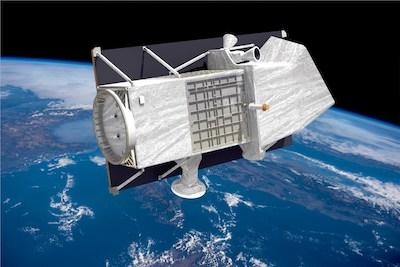The Italian Space Agency Satellite May Open Up New Scenarios For The Control Of The Environmental Processes Of Our Planet
The launch date for the Italian Space Agency (ASI) mission PRISMA (Hyperspectral Precursor and Application Mission) is a little more than a month away. The satellite will lift off from the European spaceport of Kourou in French Guiana the night between 8 and 9 March, aboard a VEGA rocket.

From its orbit, at about 385 miles of altitude, PRISMA will observe the Earth on a global scale with different eyes, being equipped with an innovative electro-optical instrumentation. The Italian satellite will look at the planet with the most powerful operative hyperspectral instrument in the world, able to work in numerous, narrow and contiguous bands arranged from the visible to the near infrared (VNIR, Visible and Near InfraRed) and up to the infrared shortwave ( SWIR, Short Wave InfraRed).
PRISMA is a program funded by ASI and represents a global excellence, which highlights the capabilities of Italy to provide a “turn-key” space system, from planning to implementation, from launching to ground data management. PRISMA was developed by a Temporary Joint Venture of companies, led by OHB Italy, responsible for the mission and management of the three main segments (land, flight and launch), and Leonardo, which built the electro-optical instrumentation. The launch will take place aboard the ESA’s launcher designed and conceived in Italy: VEGA produced by AVIO. Telespazio set up the mission control center, while data acquisition and processing will take place at the Matera Space Center.
The mission will be able to offer an unprecedented contribution to the observation of natural resources from space and to the study of main environmental processes (e.g. interactions between the atmosphere, the biosphere and the hydrosphere, observation of environmental and climate changes on a global level; aftermath of anthropic activities on ecosystems). Regarding the fields of application, PRISMA will be able to provide valuable information to support prevention of natural hazards (such as hydrogeological) and anthropic (including soil pollution), monitoring of cultural heritage, aid actions to humanitarian crises, agricultural activities and exploitation of mineral resources.
Unlike the passive satellite sensors currently operating, which record the solar radiation reflected by our planet in a limited number of spectral bands (typically a dozen at most) PRISMA would be able, thanks to the instrumentation on board, to acquire 240 bands (239 spectral bands and the panchromatic channel). This will allow to refine our knowledge concerning natural resources and environmental processes in progress, such as the phenomena linked to climate change.
PRISMA represents the perfect synthesis of an industrial system, of research and complete planning. An industrial team composed of:
OHB Italy is responsible for managing the entire program and mission, system engineering, design, platform development and integration and all satellite validation activities. The satellite has been integrated at the OHB Italy facilities in Tortona, Alessandria.
Leonardo has designed and built in Campi Bisenzio (near Florence) PRISMA’s electro-optical payload, which includes, in addition to a color camera, the world's most powerful hyperspectral instrument currently operating for Earth observation. Also from Campi Bisenzio comes the star tracker that will allow the satellite to navigate in space, while in Nerviano (near Milan) Leonardo has realized PRISMA’s solar panels and power supply unit.
Telespazio (Leonardo 67%, Thales 33%) has realized the Ground Segment - which comprehends the mission control center at Fucino (L’Aquila) and the data acquisition and processing center in Matera - and will manage LEOP (Launch and Early Orbit Phase) and in-orbit test activities. Finally, Thales Alenia Space (Thales 67%, Leonardo 33%) has implemented the data transmission system on board the satellite.
VEGA will be the ESA launcher that will bring PRISMA into orbit. It will be launch number 14 for the vector made by AVIO, a company international group leader in the field of space launchers, in propulsion and space transport. AVIO is the prime contractor for Vega, the space launcher designed to carry satellites in low Earth orbit (LEO-Low Earth Orbit), which has allowed Italy to have direct access to space. AVIO manages VEGA’s industrial supply chain, which includes companies from seven different European countries. VEGA is developed and manufactured for 65% in Italy, while the remaining 35% of production activities are spread among Spain, Belgium, the Netherlands, Switzerland, Sweden and France.
(Image provided with Leonardo Company news release)
 ANN's Daily Aero-Term (04.25.24): Airport Rotating Beacon
ANN's Daily Aero-Term (04.25.24): Airport Rotating Beacon ANN's Daily Aero-Linx (04.25.24)
ANN's Daily Aero-Linx (04.25.24) Klyde Morris (04.22.24)
Klyde Morris (04.22.24) Airborne 04.24.24: INTEGRAL E, Elixir USA, M700 RVSM
Airborne 04.24.24: INTEGRAL E, Elixir USA, M700 RVSM Airborne 04.22.24: Rotor X Worsens, Airport Fees 4 FNB?, USMC Drone Pilot
Airborne 04.22.24: Rotor X Worsens, Airport Fees 4 FNB?, USMC Drone Pilot



